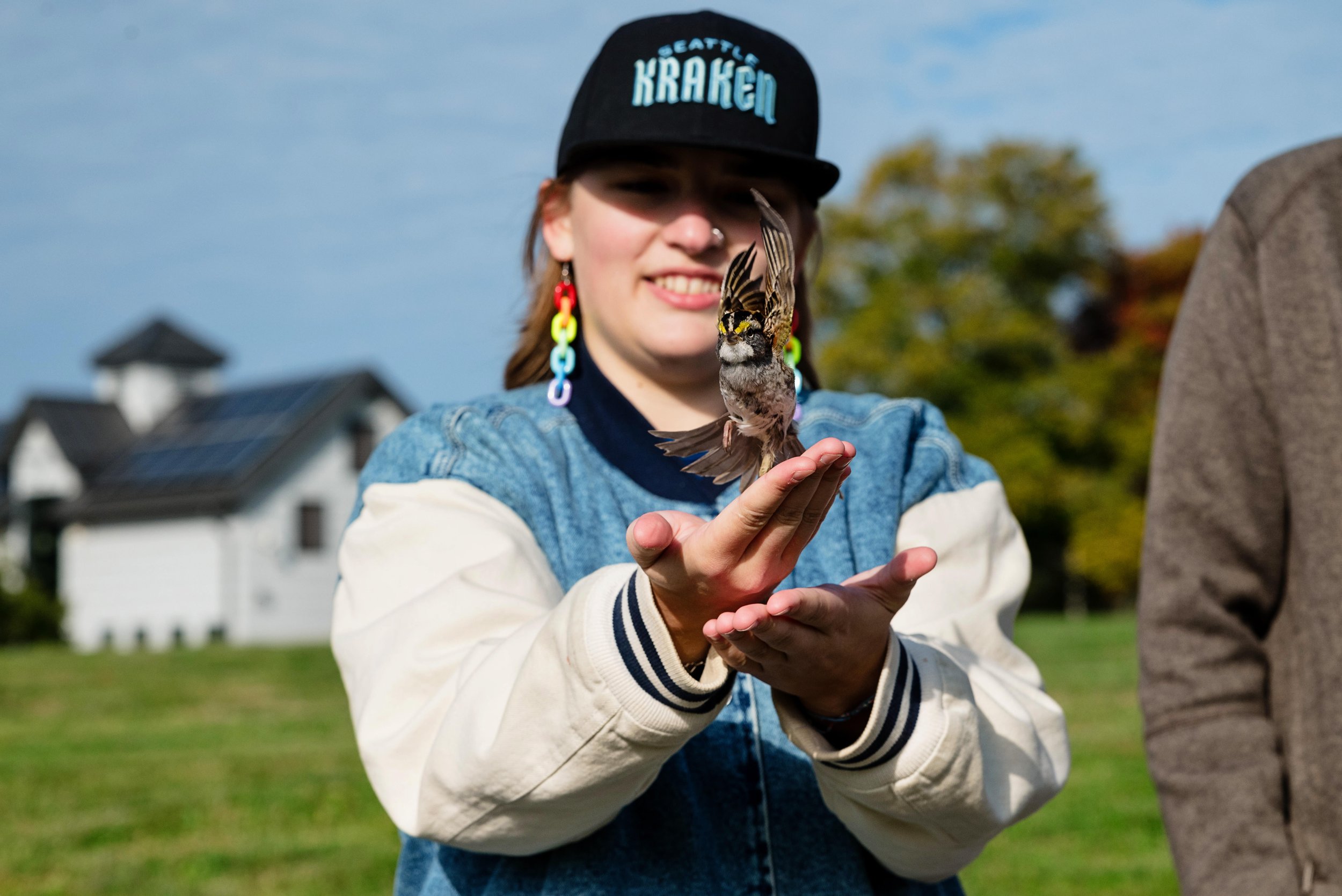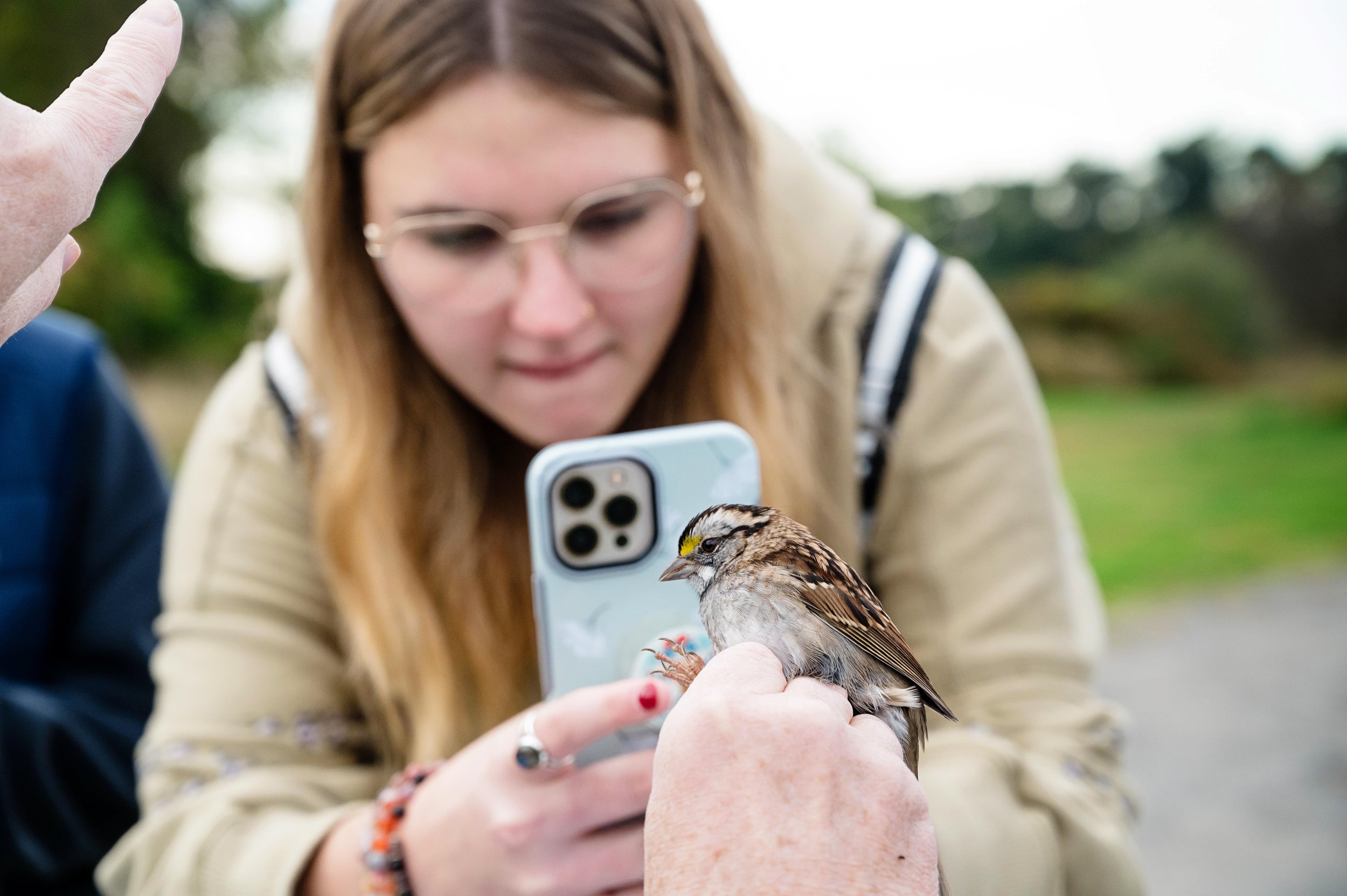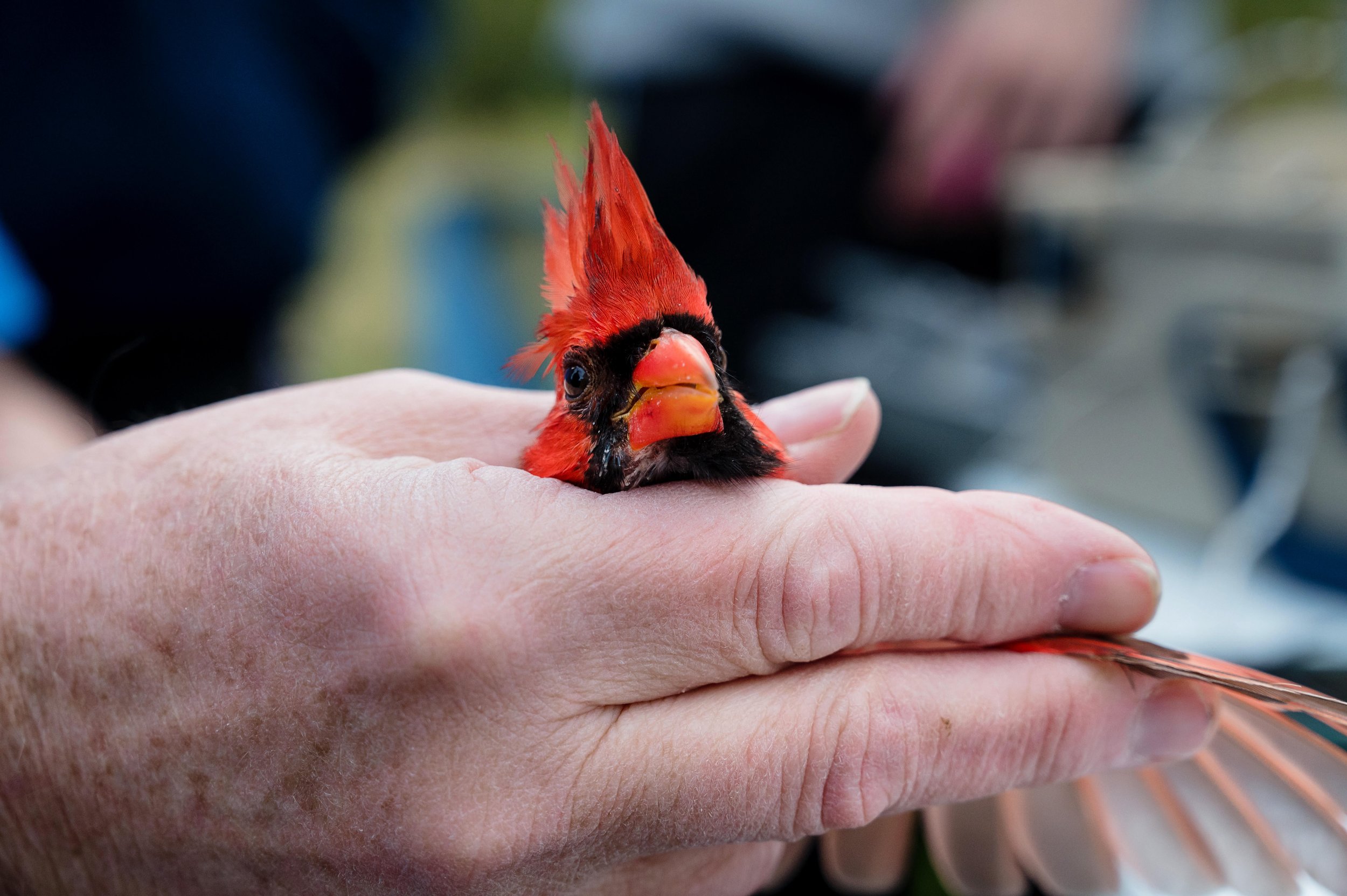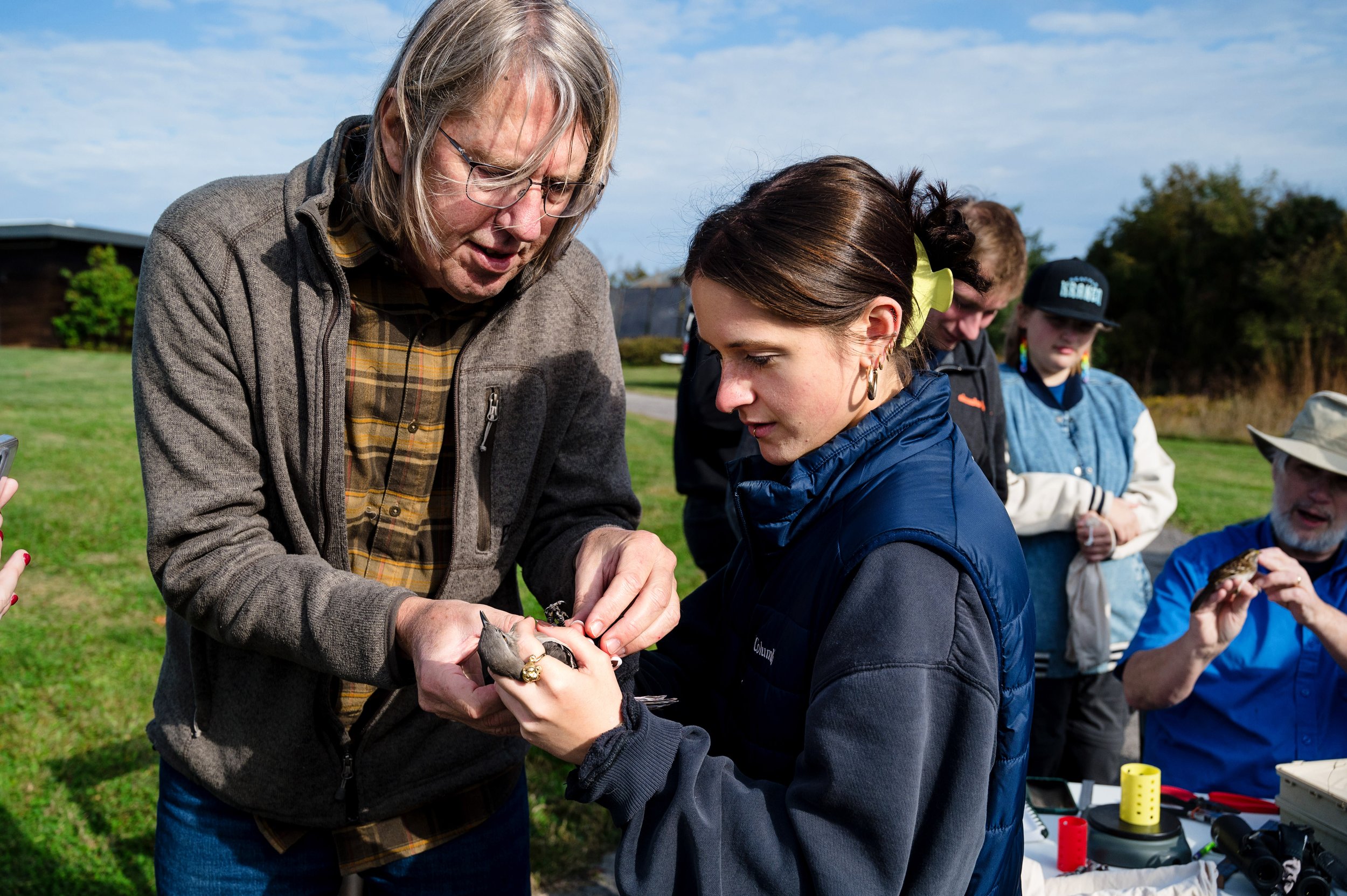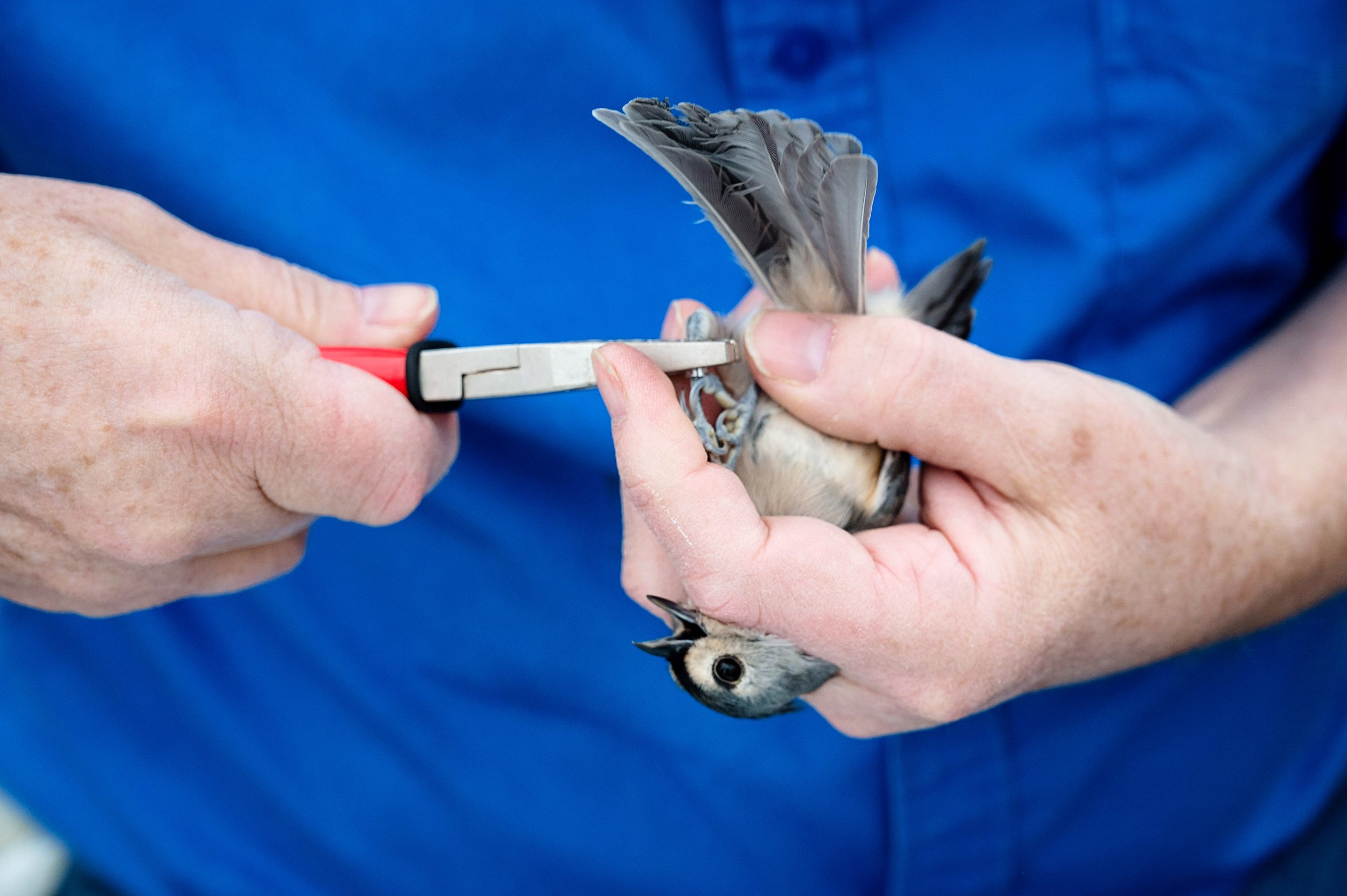Birds of a Feather— Chatham University and the National Aviary
This article was originally published in the Winter 2023-2024 issue of the Chatham Recorder Alumni Magazine and was written by Sarah C. Hamm. To view more digital Recorder stories, click here.
"The fact that the National Aviary and Chatham share these common core themes that are really important to us—sustainability, conservation, training the next generation of conservationists, and caring for our birds—that all goes into strengthening that relationship we have." -Dr. Steven Latta, Director of Conservation and Field Research, National Aviary
Indigo bunting. Tufted titmouse. Eastern towhee. So much of ornithology sounds like poetry, where language and music merge. The role of birds in our ecosystems as both musicians and messengers was not lost on Chatham University’s lauded alumna Rachel Carson, who used the absence of birdsong as a central theme in her transformational book Silent Spring, speaking evocatively of mornings “that had once throbbed with the dawn chorus of robins, catbirds, doves, jays, wrens, and scores of other bird voices.”
Now, thanks to a partnership with the National Aviary, a new generation of Chatham students are gaining skills fundamental to studying, understanding, and ultimately protecting birdlife. And they don’t have to go far— Chatham’s Eden Hall Campus offers a unique opportunity to study several different Western Pennsylvania habitats in microcosm, a feature that National Aviary Director of Conservation and Field Research Dr. Steven Latta keenly appreciates.
“I love Chatham, I love Eden Hall,” he said. “The campus, the amount of land here, the variety and types of habitats here are typical of lots of land in Western Pennsylvania and the northeast, and that’s a good thing.”
"Chatham has also made very clear they want to work with the community in diverse ways; they're reaching out to us, the community; they want to involve the community in Eden Hall and the education of students. That's welcoming, that's a great thing." -Dr. Steven Latta, Director of Conservation and Field Research, National Aviary
The University’s partnership with the National Aviary began in 2019, granting students the opportunity to use Eden Hall’s ecological offerings to complete field study portions of summer internships with the National Aviary. So far, studies have focused on grassland birds like field sparrows, common yellowthroats, and catbirds. “Grassland birds, as a group, are one of the suites of species that are declining most rapidly, so having large grasslands available is something we were excited about in terms of research,” said Latta.
One study had students mapping summer grassland territories for the birds, gaining an estimation of population size and species. Another study focused on specific bird species and their use of early successional shrub habitat. While the studies need more years of data to yield definitive conclusions, the process itself has been a success according to Latta: “It gave us a good idea of what’s possible, and most importantly, it gave several students hands-on experience.”
That level of interactive learning continues in the Special Topics: Field Ornithology class. Started in fall 2021, Field Ornithology gives students, most of whom have little experience in birding, an introduction to field methods, tools, and techniques. They observe and participate in bird banding, one of the key tools in field studies of birds that allow scientists to study bird ecology, behavior, population density, and more. It is quite literally hands-on, with students practicing how to safely hold birds, note their characteristics, and determine the animals’ species, sex, and age.
On a Friday morning in October, I met the Ornithology class beside the apple orchards at Eden Hall, the morning mist softly dissipating as we trooped down hiking trails and along the borders of meadows. “We’re in the woods!” I heard sustainability student Samantha Jocuns ’23 say to a classmate who was calling to check where the class was meeting. “I’m holding a bird. This is so crazy, I’m holding a bird at 9 o’clock in the morning.”
The mood among students was a mixture of this giddiness, along with serious scientific interest and solicitousness of the birds’ comfort. Students were well supervised by Dr. Latta and his colleague National Aviary Ornithologist Robert Mulvihill, who took every precaution to put the safety of the birds at the forefront of their work. As Latta said, “it’s not worth a data point to jeopardize the welfare of the bird, though that’s extremely rare.”
What is Ornithology?
Ornithology is a branch of zoology devoted to the study of birds. Research in the field is carried out in universities, museums, and aviaries through the study of preserved specimens, as well as in the field, where both professionals and amateurs contribute valuable information on bird ecology, distribution, behavior, and migration.
During this class, birds were captured in mist nets—thin nets with pocketed sections strung between poles, like a nearly invisible volleyball net—which were checked regularly. The birds were lifted out of the net pockets and placed in cloth holding bags; shortly after, they were removed from the bags, catalogued, fitted with lightweight aluminum leg bands, and released. In the meantime, each bird yields vital data.
Mulvihill showed students how to “skull” a bird, a method of determining the bird’s age by inspecting the layers of bone on its skull, and demonstrated two holding techniques that kept the bird safe while data was collected. The “photographer’s grip” presented the bird upright with its legs held between thumb and forefingers, allowing a clear view of the bird for species identification and other types of visual inspection. The “bander’s grip” gently but securely cupped the bird’s wings in the palm of one hand, giving more access to the bird’s leg and chest area. Mulvihill showed students how to fat-check a bird by blowing on its chest, revealing not just an approximation of the bird’s weight, but where it might be in its migratory journey.
Students also learned about the idiosyncrasies of the work. Some birds bite—cardinals are known to be tough customers—but the birds we encountered that morning were mostly calm, and the process was quick. All told, the birds go from sky to net to bag to hand to sky again in under an hour, if not much less. The mark the work leaves, however, is ongoing.
"They do poop all over you. You have to get very unconcerned about poop." -Robert Mulvihill, Ornithologist, National Aviary
The data collected from each bird goes to the Bird Banding Laboratory, part of the United States Geological Survey, which also issues permits for banding in the U.S. and distributes about one million aluminum bird bands a year. The public and scientists alike can access and utilize the collected information, some of which goes back decades, for their own research. There’s a personal impact too. “It’s moving, it’s satisfying,” Latta said of the experience teaching students in the field. “Even if they don’t become ornithologists, you know it’s going to have an impact on them, throughout their lives.”
“Oh my god this is amazing, you’re incredible,” student Cassie Hoffman ’26 tells the bird she’s holding. It’s a song sparrow, the kind you might see by the dozen hopping around a parking lot or urban sidewalk, but presented in photographer’s grip, its keen eyes taking in the world, the bird is transformed into something remarkable, indelible. You can tell, long after the bird has flown away, the experience remains. “I would never get sick of that,” said Hoffman. “I’ve always wanted to hold a bird, my whole life.”
Above her, a flock of Canadian geese sliced through the sky in V formation, headed to warmer climes. The cycles of life, the movement of the seasons, is in the air at Eden Hall Campus, and right in the palm of our hands. I was reminded of another quote by Rachel Carson, this one ringing with less warning, and more hope: “There is symbolic as well as actual beauty in the migration of the birds, the ebb and flow of the tides, the folded bud ready for the spring.”

